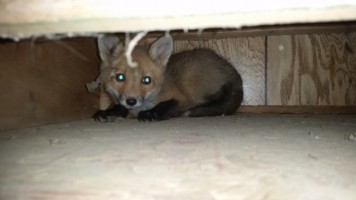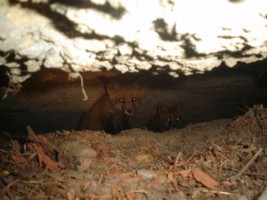
A number of fox sightings in the in the NDG neighborhood of Montreal are raising questions about the safety of wild animals and humans living in close proximity to one another.
Surprising, you say? It shouldn’t be. There’s more wildlife than most people realize in Montreal, including deer and coyote packs on the West Island. Foxes, similar to raccoons, are especially comfortable in urban settings.
January is usually the month of unrest within the fox family – not only is it the height of mating season, but also the peak dispersal season too. Cubs that were born last year, now adults, will be seen as a threat to the breeding rights and the available food supply of their parents. Any sub-adults who have failed to disperse will usually be continually chased away. Many of the sub-adults will actually leave of their own accord in search of a territory and a mate of their own. The resident dog fox and vixen will be actively defending the territory against intruders, both physically and vocally. They do this by barking and urinating and defecating along the borders of their territory.
Montreal’s pets are safe. It is highly unlikely that they would attack pets or small children.
Foxes adapting to urbanization
The red fox is a species of canine (therefore, a relative of the dog) that is opportunistic and frequents a range of environments. It is happy enough in the countryside, but it is equally comfortable in the city, where there is plenty to eat: pigeons, squirrels, mice, rabbits, groundhogs, birds. They are also known to eat insects, acorns, fruits, vegetables and eggs.
Living in the city, of course, entails adaptation. And here, the fox is simply a hands-down winner. In the bucolic state, foxes are shy of one another. They need lots of room. Their rural profile is that of a loner. But in the city, for instance at the Mt. Royal Cemetery on the south-facing slope that yields to the northern vista of the Université de Montréal, there’s a rock haven one might call a fox hotel. They’ve learned to live ‘together’ in harmony.
 They often look for a safe, quiet place to build a den, and can fit into a 4 inch by 4 inch hole, so watch out for those small cracks under your deck,garage or shed! Foxes are also good climbers.
They often look for a safe, quiet place to build a den, and can fit into a 4 inch by 4 inch hole, so watch out for those small cracks under your deck,garage or shed! Foxes are also good climbers.
However, foxes become defensive over their young like any other species. If you happen to see fox pups, stay clear and do not try to approach them.
Coexisting with Foxes
“There is no perfect way for getting rid of foxes,” Bill Dowd, the president of Skedaddle Humane Wildlife Control says.
“What can be done is prevention, by animal proofing any open spaces, such as under porches, steps,and cabanons.”
Other preventive measures include not feeding foxes and removing any indirect food sources, like bird feeders or pet food left outside.
The Skedaddle Humane Wildlife Control prevention approach
Instead of setting traps and waiting for something to come along, we take a targeted and proactive approach to wildlife control that includes removing the animals from their den site by hand and securing the entry points so they can’t come back. As a pioneer in the wildlife control industry, Skedaddle Humane Wildlife Control has always prided itself on using only humane methods to remove wildlife. Our wildlife specialists are also equipped to clean up the mess left behind by an infestation and all of our workmanship and materials are backed by a lifetime guarantee.
The key to getting the animals out and preventing a re occurrence is to block access. A Skedaddle Humane Wildlife Control technician will be able to tell you what work might be required to get the animals out and to keep them out, and to make you aware of potential issues that may be unseen. Skedaddle Humane Wildlife Control digs a trench and uses heavy-gauge screening to prevent foxes from gaining entry under porches, cabanons, and any other structure without a foundation. They can be very persistent, so making sure you’re hiring someone with experience is important.
Skedaddle Humane Wildlife Control is proudly servicing:
Montreal: Notre-Dame de Grace (NDG), Lasalle, Cartierville, Laval, Outremont, Villeray, Cote des Neiges, Montréal, Plateau, Mont-Royal, Cote St-Luc, Montréal-Nord, Westmount, Hampstead, Montréal Ouest, Verdun, Ahuntsic, Ile des Sœurs, Anjou, St-Léonard, Laval, Terrebonne, Rivière-des-Prairies–Pointe-aux-Trembles
West Island: Pointe-Claire, Beaconsfield, Baie d’Urfé, Senneville, Dorval, Dollard-des-Ormeaux, Pierrefonds, Kirkland, Saint-Laurent, Ste-Geneviève, Roxboro, Sainte-Anne-de-Bellevue, I’île Bizard and Lachine


